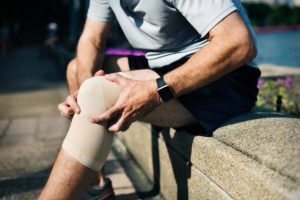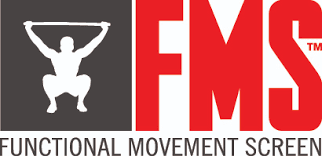
stress from everyday activities.
But how does the knee work? What does it mean if someone’s knee joint hurts? Let’s start by understanding the structures inside the knee and how they move and protect this powerful, hinge-like joint.
How does the knee work?
The knee is made up of three bones: the femur, the tibia, and the patella (your kneecap).
Anatomically, the knee is the largest joint in the body and is made of a series of bones,
ligaments, cartilage, and tendons working in unison. This harmony of body parts allows us to
perform basic movements like bending at the knee to pick things up off the floor.
Between the bones of the knee joint is lots of soft, rubbery cartilage that acts like shock
absorber. The cartilage is called a meniscus. It is springy and forms a half-moon shape to
cushion the bony surfaces. More cartilage lines the bone surfaces themselves, preventing
wearing down or degeneration of bony surfaces. When you hear the phrase “bone on bone,”
this often describes the loss of articular (joint) cartilage and a loss of volume of the meniscus,
usually from injury or wear and tear.
The knee also has several ligaments and small-but-powerful muscles connecting the bones to
provide additional stability and protection to the knee. Lastly, tough, rubbery cords of tissue
called tendons connect the muscles to the bones directly.
Although the knee is shaped like a door hinge, it also can slightly twist. This slight rotation to
the left and to the right allows for greater agility and movement. It’s called a “screw home”
mechanism because of the way the knee surfaces slide together and rotate in unison, like a
twisting screw, allowing greater flexibility, extension (knee fully out) and flexion (knee fully bent).
The knee is a very complex structure that operates much like a piece of machinery! The knee
coordinates and works together to maintain balance and speed for daily movements such as
walking, kneeling, and bending, and more athletic activities like jumping and running.
What does knee pain feel like?
Knee pain isn’t “one size fits all” and can depend on the type of injury happening to the knee.
Sharp, burning pain can indicate a variety of conditions including local nerve pinching or even
nerve impingement from the hip or low back. Pulling or tight sensations could indicate muscle
contraction, and soreness could indicate muscle fatigue or muscle tears. Pain can also feel like a
deep aching in the joint, like with arthritic processes, or right on top of the skin if there are
infections, abrasions, or even damage to cutaneous (skin) nerve endings.
Knee pain may not involve the entire knee, either. Pain may be specific or local to a part or a
side of the knee. Knee injuries may have pain on the inner or outer sides of the knee, deep
inside the joint, in the front, above or below the knee, or even in the back of the knee near the
crease. Some individuals may have a hard time identifying the location of the pain, which is normal, too.
And just to be more confusing, knee pain is not always an indicator that something is happening
in the knee. Clicking, popping, and locking of the knee can indicate damage to the cartilage
without trigger feelings of pain, or they may be harmless sensations that come and go. You may
feel like the knee has decreased motion overall if there is a cyst in the back of the knee or
decreased cartilage between joints. You may feel your knee “catch” with certain movements,
such as extending the knee fully while walking. Your knee may also feel too loose or unsteady of
there is damage to the supportive ligaments.
What causes knee pain?
Because of the continual stress on the joint, the knee joint is prone to developing injuries
alongside normal wear and tear. Some of this is natural, such as the wearing down of soft
tissues and joint structures seen with normal aging. Other causes include repetitive activities
and exercises, sudden movements or trauma, or external forces acting on the knee joint past
the point of normal withstanding threshold, resulting in a knee injury. Excessive looseness in
the joint from connective tissues disorders, such as Ehlers-Danlos and Marfan’s syndromes, can
increase the risk of injury to the knee.
Some injuries that occur to the knee are:
- Arthritis
- Fracture
- Tendinitis
- Bursitis
- Torn knee cartilage
- Dislocated kneecap
- Sprained ligaments
- Muscle tears (muscle strains)
- Baker’s cyst
- Patellofemoral pain syndrome
- And more
Increasing age, being overweight, certain diseases like gout or autoimmune conditions,
previous history of injury, lack of exercise, and improper exercise and movement put the knee
at greater risk for injury.
How we treat knee pain
At Cardinal Chiropractic and Sports Recovery, we take the time to get to know you. Pain is not
easy to endure, and we strive to provide the most compassionate and effective forms of
treatment.
After a thorough examination and diagnosis, if chiropractic care is not the right intervention for
your pain, then we make the referral to another specialist such as an orthopedist, physiatrist, or
rehabilitation specialist.
If you or someone you know is suffering from knee pain, give our office a call to schedule an
appointment rather than wait to see if the pain improves or goes away. Our chiropractic office
has managed many people with knee pain move better, live healthier, and enjoy a pain-free life!
If you want a same-day appointment for your pain, call our office at 336-270-3050 or schedule online.



